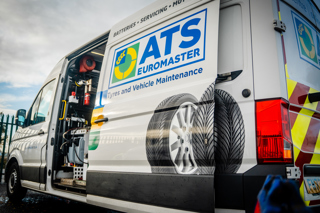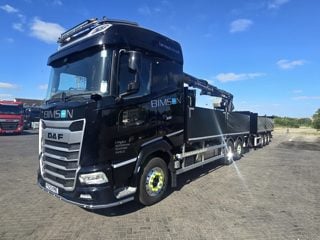Punctures
Punctures are the most common cause of a fleet vehicle being stranded at the side of a road. In most cases, this is merely an inconvenience, but punctures can have a much more serious impact and cause major collisions if the tyre fails suddenly at high speed.
In such circumstances, a new tyre will be required and is the only safe option. However, with a tyre that has gone flat while the car is parked, repairing it is a possibility. This can be offered if the damage to the tyre is limited to the central 75% of the tyre’s tread and the tread must be above the 1.6mm legal minimum. Any damage to the outer edges of the tyre tread or it shoulders cannot be repaired, so a new tyre will be required.
Almost all fleets now operate a straightforward replacement policy rather than trying to repair a puncture. Many look on a repair as a false economy as the time it takes for the tyre to be fixed is longer than is needed to fit an entirely new one.
Even so, some repairs will be carried out. Malcolm Roberts, of Hitachi Capital Vehicle Solutions, says: "Our policy is to repair tyres without cost to the customer and charge only for the unused proportion of a damaged tyre if it needs replacing. Alternatively, we can offer a 'no-quibble' replacement option if required.
"The advantages of this option include the removal of an unquantifiable cost and it eliminates the administrative element of processing recharges."
When agreeing a no-quibble replacement policy as part of a tyre deal, fleets should look to include an unlimited number of tyres within that arrangement. This means any unexpectedly large number of punctures in any given period will be covered at no extra cost to the end user.
Peter Bonney, fleet manager for the Salvation Army, runs a fleet of 750 cars and a few light commercial vans and has a no quibble tyre policy with his leasing company.
He says: "We like the ease of a no-quibble deal, even if there is a cost attached that is spread over the whole fleet and included within the overall price we pay. We are happy to pay a higher price for the peace of mind it delivers as we know our vehicles will be back on the road with a new tyre and in the safest possible condition."
An employer’s duty of care to its drivers is a key element in the replace rather than repair attitude that now exists among most fleet managers and operators. In some cases, replacement is the only option anyway, such as with run-flat tyres fitted to some models.
Another development in recent years that can influence the repair versus replacement argument is the lack of a spare wheel in many modern cars. Manufacturers have taken to selling news cars without a spare wheel, often even without a smaller spacesaver spare, to make the car lighter and help it achieve a lower carbon dioxide emissions rating while also improving fuel economy.
Kwik Fit’s Peter Lambert offers his view: "Many fleets would like a spare tyre in the vehicle, but they also want low emissions to save money such as Vehicle Excise Duty, capital allowances and Class 1A National Insurance contributions, as well as benefitting from lower benefit-in-kind bills. A spare wheel adds weight and compromises on available boot space."
This makes sense right up to the point where you have a puncture and is why a straightforward tyre replacement is the simplest action.
A mobile tyre fitter can change a tyre much more readily than repair one so the fleet driver can be on his way more speedily.
Malcolm Roberts says: "While some customers see the lack of a spare wheel as an inconvenience when they have a tyre failure, the major roadside assistance organisations are aware of the situation and have more efficient methods of dealing with tyre related incidents in our view. Also, our customers are more reticent to have their drivers change the wheel themselves at the roadside due to health and safety concerns."
Those concerns include the environment where the wheel change is taking place. A busy road is a very dangerous place to stop, never mind jacking up a car and changing a wheel. For this reason, it is often safer to use a roadside assistance company.
It is also why few fleets decide to fit their cars with a spare wheel if this is an option from the manufacturer.
With vans, a spare wheel is a more common option used by fleets as the spare has much less of an impact on the vehicle’s load carrying capacity and economy.
As for the cans of tyre sealant provided with many cars in lieu of a spare wheel nowadays, many fleet leasing firms and fleet managers are wary of them and view them simply as a get-you-home solution before fitting a new tyre as soon as possible.




















Bob the Engineer - 31/10/2014 08:04
2mm is dangerous any high mileage driver knows this. But its legal so fulfills the true aim of most fleets duty of care, backside covering for seniors. The weather is changing, sudden and severe rainfall is more frequent (look at all the flooding in recent years) meaning drivers frequently, suddenly faced with roads covered in standing water. I really think the legal minimum should be raised to 2.2mm to force fleets to act responsibly by changing below 2.5.